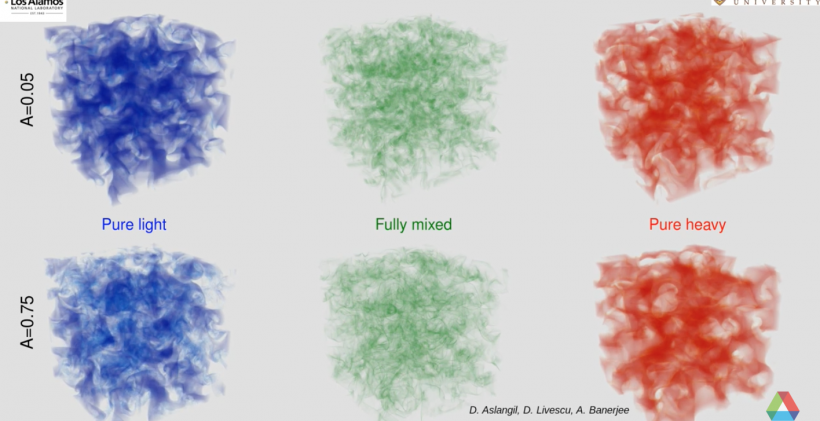CREDITS: Denis Aslangil, Mechanical Eng. and Mechanics, Lehigh University; Daniel Livescu, Los Alamos National Laboratory; Arindam Banerjee, Mechanical Eng. and Mechanics, Lehigh University
- High-resolution Direct Numerical Simulations (DNS): 20483 ~ 9 billion grid points.
- Explore high-density ratio (Atwood number) effects on the evolution of HVDT.
- Two different density-ratios investigated:
- Low Density ratio (Boussinesq case) : 1.105:1 (Atwood Number = 0.05)
- High Density ratio (non Boussinesq case): 7:1 (Atwood Number = 0.75)
At high density ratios, mixing is strongly asymmetric with pure light fluid mixing faster than pure heavy fluid.
Computational resources were provided by the Argonne Leadership Computing Facility at Argonne National Laboratory through a 2017 ALCC Award and the Institutional Computing Program at Los Alamos National Laboratory. Authors (AB and DA) also acknowledge support through DOE-SSAA program (DE-NA0003195) and NSF CAREER Grant (Award # 1453056).
